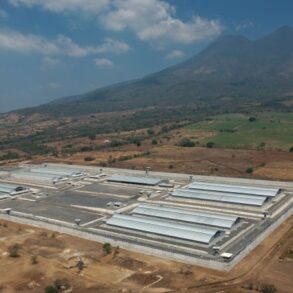
Nighttime lighting data from detention facilities in Tibet has renewed global discussion about China’s decades long persecution of Tibetans in the autonomous region.
While the report’s findings offer limited insights into the current state of detention across the region, analysts say some evidence shows a fundamental shift in policing.
The study released by the nonprofit RAND Europe research institute shows increased activities at high-security detention facilities in recent years, suggesting a possible shift from low-level detention to longer-term imprisonment and detention in the autonomous region.
Using satellite-based sensors to measure nighttime lighting consumption at detention facilities, RAND Europe said the findings may help improve the outside world’s understanding of China’s “stability maintenance” efforts in Tibet, which the researchers characterize as an “information black hole” to the international community.
“State actors, human rights organizations, academics, and the Uyghur diaspora have all worked to increase our understanding of the situation in Xinjiang in recent years, but we have not had a similar focus on Tibet,” Ruth Harris, director of defense and security at RAND Europe and one of the report’s authors, told VOA.
She hopes the report can “shed light on security and detention facilities” in the Tibet Autonomous Region.
By examining 79 detention facilities throughout TAR, the report found growth in nighttime lighting usage at 14 higher-security facilities since 2019. A closer look showed increases at high-security prisons in 2019 and 2020, while high-security detention centers saw an increase between 2021 and 2022.
Despite similar levels of security, high-security prisons in TAR tend to have recreation facilities, while detention centers look more like cellblocks.
While nighttime lighting data between 2014 and 2022 suggests no major changes to TAR’s detention system, Harris thinks the concentration of nighttime lighting growth in higher-security facilities since 2019 suggests “a possible shift toward longer-term imprisonment and detention of Tibetan dissidents.”
That would be similar to the trend in Xinjiang, where more than 1 million Uyghurs and other ethnic minorities have been sent to re-education camps, detention centers or prisons in recent years.
This post was originally published on this site be sure to check out more of their content.




